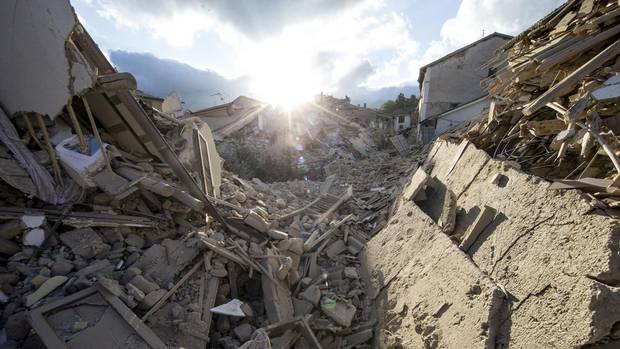This story was originally published on Aug. 25, 2016.
In 1915, a 6.7-magnitude earthquake struck Avezzano, killing 32,000 people. The current death toll for Wednesday's quake, only 65 kilometres north of the Avezzano site, is at 241 people.

JOHN SOPINSKI/THE GLOBE AND MAIL (SOURCES: GOOGLE MAPS, NEW YORK TIMES, BBC)
Italy, one of the most seismically active countries in Europe, has a long history of large earthquakes. The movement of tectonic plates produces large events – earthquakes and volcanic activity. In southern Italy, the Eurasian and African tectonic plates, both massive plates floating atop the Earth's mantle, are in constant friction. Their large bumps and scrapes often lead to widespread damage.
The tectonic shifting also leads to volcanic activity – Vesuvius, Etna and Stromboli all fall along the fault line between the two large plates. Along the Apennines, a mountain range stretching from the middle of the country to the north, the region is home to myriad smaller shifting plates, also creating trembling beneath the ground.
Italy's rich history of architecture – with many of its buildings dating back more than 1,500 years – leaves many of its villages and older structures vulnerable whenever an earthquake hits.
Contrary to popular belief, the magnitude and intensity of an earthquake don't always lead to the most devastation. Instead, building codes, construction materials and population density all play crucial roles in determining the human cost of large seismic events.
Both Japan and Indonesia experienced earthquakes and tsunamis measuring 9 and 9.1, respectively. Because of Japan's more stringent building codes and construction techniques that anticipate tremors, the death toll from its 2011 earthquake produced significantly fewer deaths than the quake in Indonesia. Before the advent of seismic building codes between the 1960s and 1970s, construction was rarely conceived with earthquakes in mind.
Many wealthy nations now have the ability to retrofit existing structures with seismic upgrades, while poorer nations bear the brunt of destruction when a natural disaster hits.
The 10 deadliest earthquakes, 1980-2014
Source: Munich Re
Port-au-Prince, Haiti
- Jan. 12, 2010
- Casualties: 222,570
Shortly before 5 p.m., a 7.0-magnitude quake struck 25 kilometres west of the capital of Port-au-Prince, devastating the Caribbean country. The initial quake and the recorded 24 aftershocks affected three million residents. Poor construction and living conditions had a large impact on the death toll.
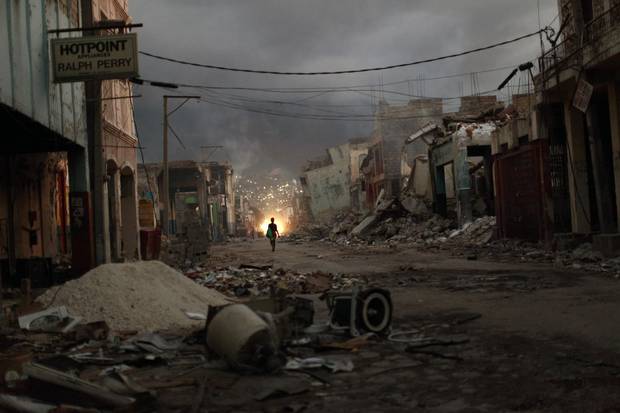
A woman walks downtown in earthquake-torn Port-au-Prince on Feb. 11, 2010.
RODRIGO ABD/ASSOCIATED PRESS
Sumatra, Indonesia
- Dec. 26, 2004
- Casualties: 220,000
The third-largest earthquake ever measured by a seismograph, registering between 9.1 and 9.3 on the Richter scale, struck off Sumatra's west coast. One of the deadliest natural disasters in recorded history, the quake created a massive tsunami. Indonesia was the worst hit, but the quake and waves inflicted damage on surrounding countries, including Sri Lanka, India and Thailand.
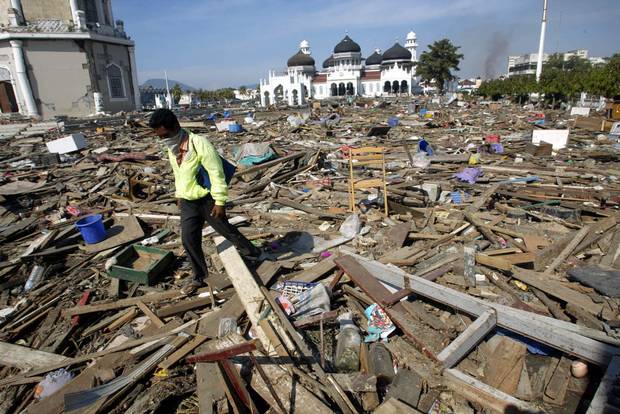
A man walks through debris near the Great Mosque in Banda Aceh, Indonesia, on Dec. 29, 2004.
DITA ALANGKARA/ASSOCIATED PRESS
Kashmir-Pakistan, India, Afghanistan
- Nov. 8, 2005
- Casualties: 88,000
The 7.6-magnitude quake hit Pakistani areas of Kashmir particularly hard. Occurring during the month of Ramadan, many people were inside resting during the day, with children in school at the time. Entire villages and towns were wiped out. The winter hampered recovery efforts and increased the death toll.
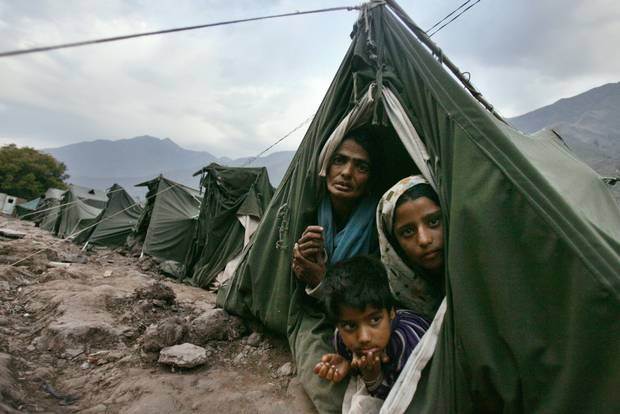
Begum Askar, left, Shaheeda, right, and Waheeda look out from their tent at a relief camp near Kalgie, about 110 kilometres northwest of Srinagar, India, on Oct. 25, 2005.
GURINDER OSAN/ASSOCIATED PRESS
Szechuan, China
- May 12, 2008
- Casualties: 84,000
The 8.0-magnitude earthquake left at least four million residents homeless, and a series of aftershocks increased damage and casualties. Areas most affected by the quake were those with high levels of poverty and poor building construction. Thousands of students were killed when seven schools collapsed.
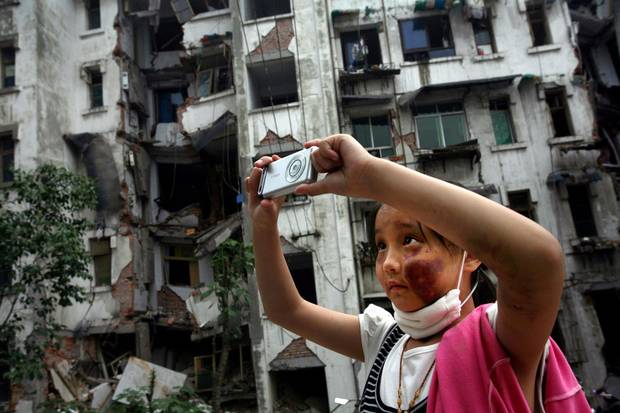
Nine-year-old Xia Xueyin, her face badly bruised from a fall an earthquake, takes photos of her family’s damaged home in Hanwang town on May 22, 2008.
DAVID GUTTENFELDER/ASSOCIATED PRESS
Manjil, Iran
- June 20, 1990
- Casualties: 40,000
The 7.4 earthquake affected large areas northwest of Tehran, the capital. The epicentre was close to the surface, amplifying the intensity of the shaking. The use of mud-brick and wood, poor welding techniques, as well as a lack of earthquake regulations, led to widespread destruction of most structures.
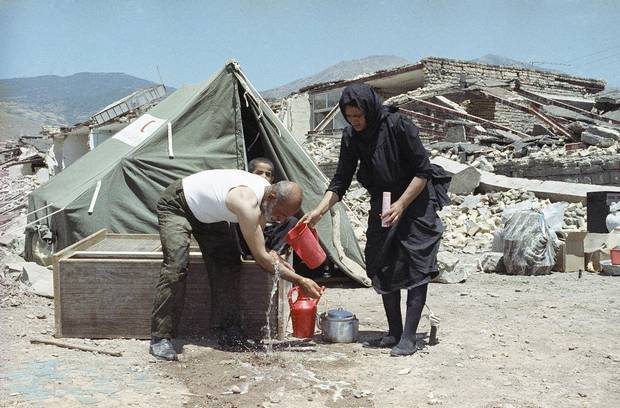
An Iranian man gets help from his wife as he cleans up outside their tent in Manjil, Iran, on June 28, 1990. They lost their home in the earthquake.
BOB JORDAN/ASSOCIATED PRESS
Bam, Iran
- Dec. 26, 2003
- Casualties: 26,200
Registering at 6.6, the quake destroyed many of the mud-brick structures in the city. The remote location of the city, in the southeastern part of the country, meant Tehran's disaster relief took additional time to reach the affected areas. The famous Bam Citadel, a UNESCO World Heritage Site and a large draw for tourists, was also destroyed.
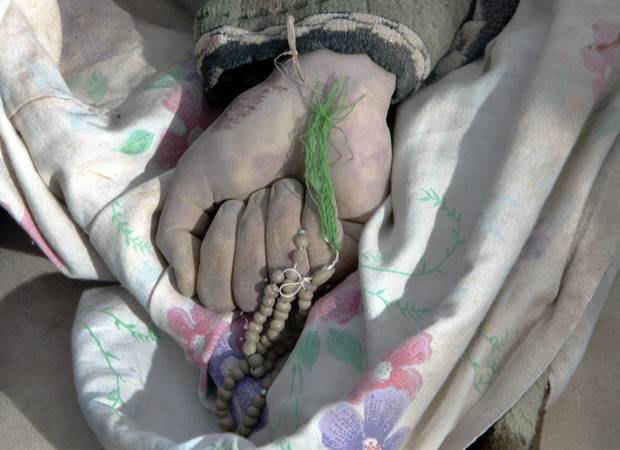
Worry beads remain in the hand of a man who died praying in Bam, Iran, on Dec. 27, 2003.
CAREN FIROUZ/REUTERS
Spitak, Armenia
- Dec. 7, 1988
- Casualties: 25,000
The earthquake, registering at 6.8, destroyed large parts of northern Armenia, which at the time was part of the former Soviet Union. Poor building construction played a large role in the death toll. Due to the scope of the disaster zone, the Soviet Union formally asked the United States for assistance, the first such request since the Second World War.
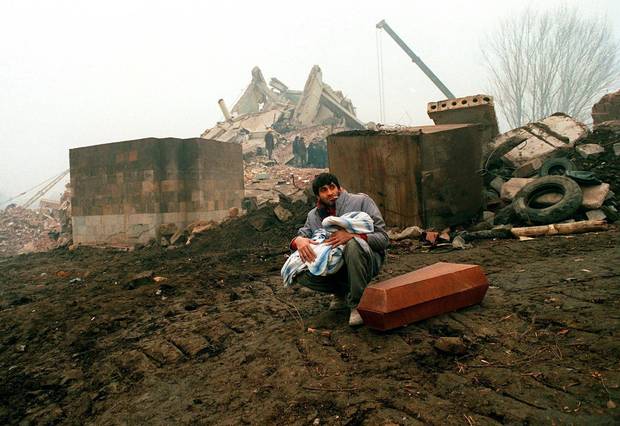
A man holds the body of his child killed during a devastating earthquake in Armenian city of Leninakan, then part of the Soviet Union’s Republic of Armenia, on Dec. 10, 1988.
ALEXANDER ZEMLIANICHENKO/ASSOCIATED PRESS
Izmit, Turkey
- Aug. 17, 1999
- Casualties: 17,118
Early in the morning, a 7.6-magnitude earthquake struck northwestern Turkey, badly damaging nearby Izmit and affecting eastern Istanbul. Many structures collapsed due to the building materials used in their construction. The sprawling industrial areas also suffered damage and raised the death toll.
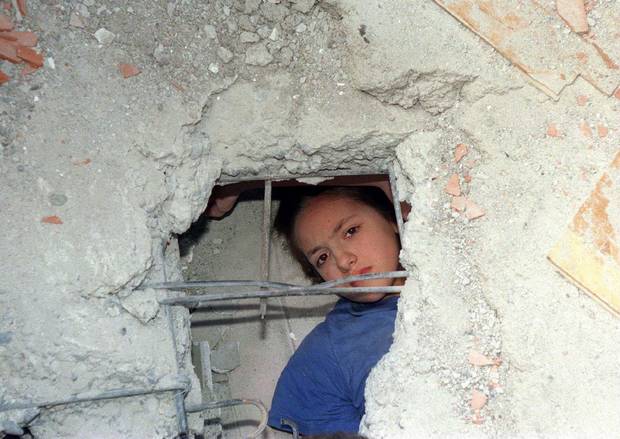
A 13-year-old girl identified only as Ozge looks through a hole in the rubble of a collapsed building while waiting to be rescued in Sakarya, Turkey, on Aug. 18, 1999.
ASSOCIATED PRESS
Tohoku, Japan
- March 11, 2011
- Casualties: 15,880
The fourth-most powerful earthquake recorded in modern times, the 9.0 quake created a large tsunami reaching heights of 40.5 metres. The shaking also led to three meltdowns at the Fukushima nuclear plant, evacuating hundreds of thousands of residents. While the damage was widespread, Japan's earthquake construction standards significantly reduced the death toll.
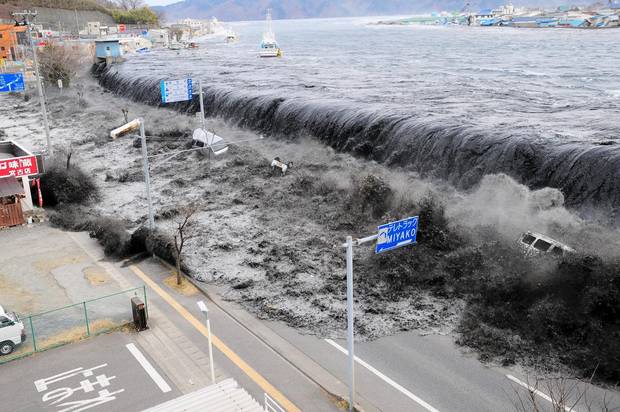
A wave approaches Miyako City from the Heigawa estuary after a magnitude 8.9 earthquake struck the area on March 11, 2011.
MAINICHI SHIMBUN/REUTERS
Gujarat, India
- Jan. 26, 2001
- Casualites: 14,970
More than a million structures were damaged or destroyed by the 7.7 earthquake, which hit western India. The epicentre was nine kilometres from the village of Chobari, but the tremors also affected surrounding villages. More than 40 per cent of homes were destroyed in the densely populated areas, as well as eight schools, two hospitals and sections of road.
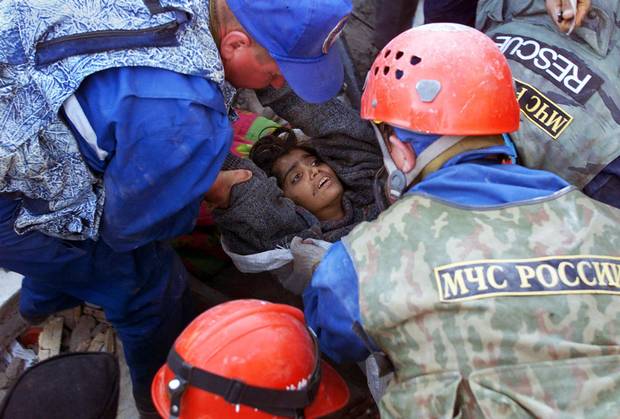
Kuntal Thakkar, 22, is brought out by a Russian rescue team on Jan. 31, 2001, after surviving six days under tons of earthquake rubble in Bhachau, western India.
JOHN MOORE/ASSOCIATED PRESS
THE ITALIAN EARTHQUAKE: MORE FROM THE GLOBE AND MAIL
CANADA: WAITING FOR THE 'BIG ONE'
